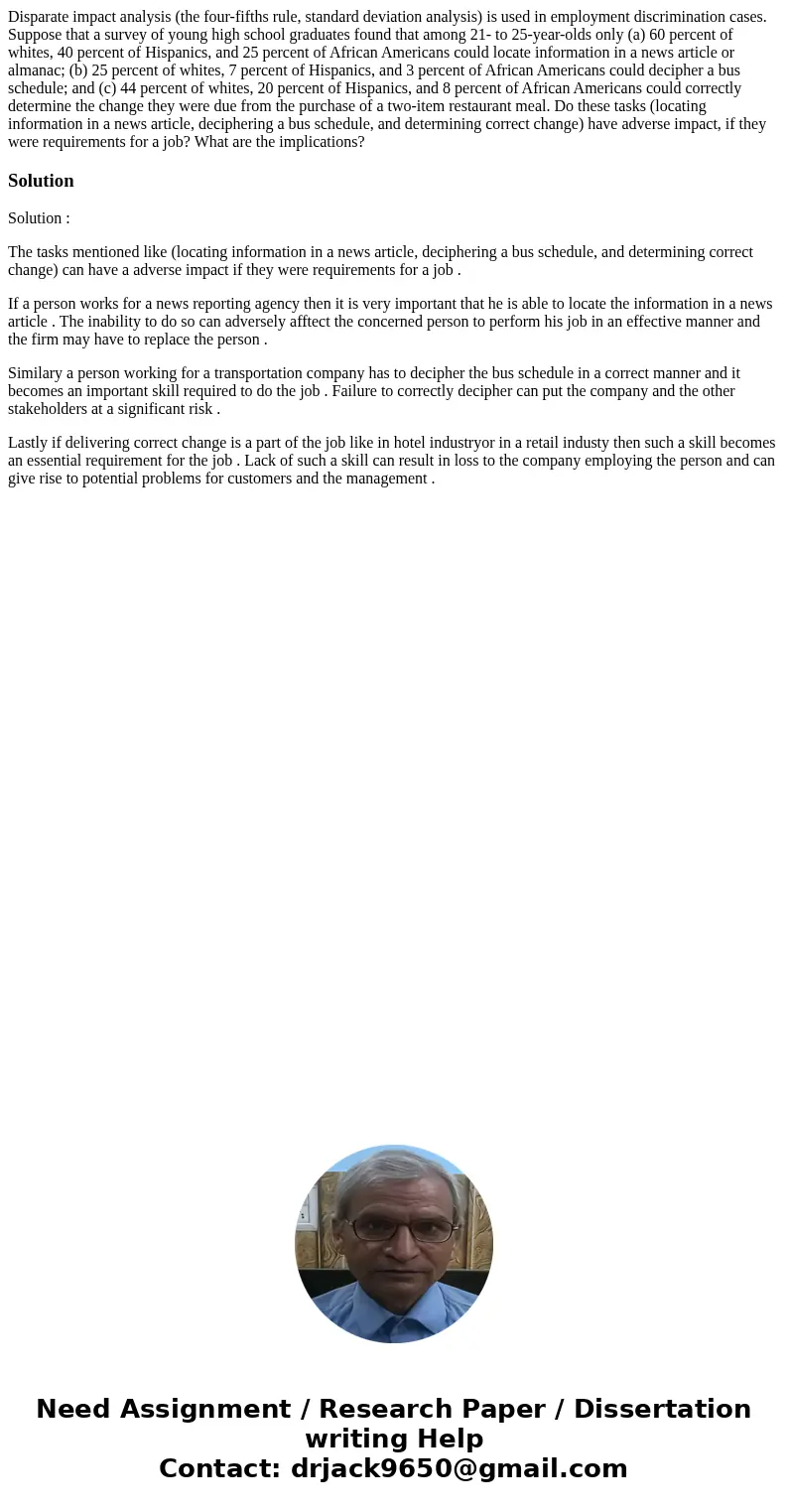Disparate impact analysis the fourfifths rule standard devia
Disparate impact analysis (the four-fifths rule, standard deviation analysis) is used in employment discrimination cases. Suppose that a survey of young high school graduates found that among 21- to 25-year-olds only (a) 60 percent of whites, 40 percent of Hispanics, and 25 percent of African Americans could locate information in a news article or almanac; (b) 25 percent of whites, 7 percent of Hispanics, and 3 percent of African Americans could decipher a bus schedule; and (c) 44 percent of whites, 20 percent of Hispanics, and 8 percent of African Americans could correctly determine the change they were due from the purchase of a two-item restaurant meal. Do these tasks (locating information in a news article, deciphering a bus schedule, and determining correct change) have adverse impact, if they were requirements for a job? What are the implications?
Solution
Solution :
The tasks mentioned like (locating information in a news article, deciphering a bus schedule, and determining correct change) can have a adverse impact if they were requirements for a job .
If a person works for a news reporting agency then it is very important that he is able to locate the information in a news article . The inability to do so can adversely afftect the concerned person to perform his job in an effective manner and the firm may have to replace the person .
Similary a person working for a transportation company has to decipher the bus schedule in a correct manner and it becomes an important skill required to do the job . Failure to correctly decipher can put the company and the other stakeholders at a significant risk .
Lastly if delivering correct change is a part of the job like in hotel industryor in a retail industy then such a skill becomes an essential requirement for the job . Lack of such a skill can result in loss to the company employing the person and can give rise to potential problems for customers and the management .

 Homework Sourse
Homework Sourse